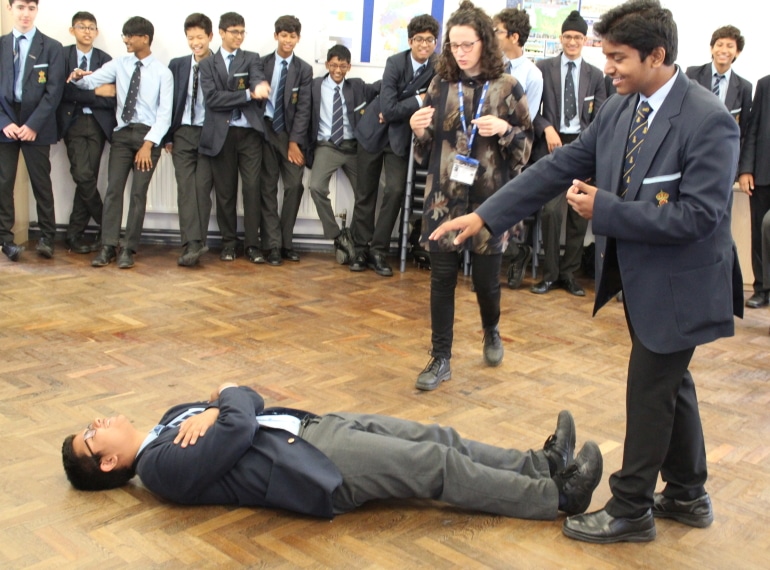
Year 9 pupils took a trip back in time to the dark days of Shakespeare’s Macbeth at a special Enrichment Day that offered them the chance to engage dramatically and creatively with the ‘Scottish play’.
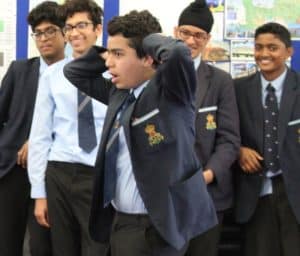 Featuring a series of interactive workshops, the day brought to life Shakespeare’s brooding and exciting tragedy, which most of Year 9 had studied – from a purely textual point of view – earlier in the year.
Featuring a series of interactive workshops, the day brought to life Shakespeare’s brooding and exciting tragedy, which most of Year 9 had studied – from a purely textual point of view – earlier in the year.
Head of English Robert Hyland said: “Shakespeare was not written to be studied, but to be performed; therefore, an engagement with Macbeth would be incomplete without some understanding of the stagecraft and dramatic opportunities that this approach to the text provides, away from the minutiae of language analysis.”
Pupil Mahmudur Rahman enjoyed the day and said it helped him understand the play better: “The thing I like about drama is that you can play another person’s life – it’s a distraction from normal life and you can live in another person’s shoes. You can explore any dimension in history, going back centuries before, which I find fascinating.”
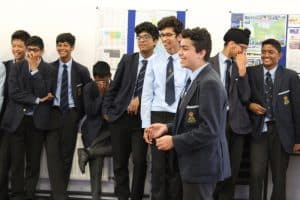 Mahmudur’s fellow Underne House member, Varun Maheswaran, said: “It was a fun day. When we played out the Macbeth scenes, it was enjoyable to explore the play in an interactive way.”
Mahmudur’s fellow Underne House member, Varun Maheswaran, said: “It was a fun day. When we played out the Macbeth scenes, it was enjoyable to explore the play in an interactive way.”
Organised by Mr Hyland, the all-day event took place in a classroom and the Main Hall. It was led by experienced drama professionals Gavin Malloy and Lauren Steadman, from RM Drama, QE’s external drama partner.
The workshops focused on:
- Key characters – such as the relationship between Macbeth himself and Lady Macbeth
- Key scenes – looking at the opening with the three witches
- Key themes – including ambition, guilt, the supernatural and violence.
The techniques explored included the deployment of ‘freeze-frame’ tableaux, the use of dialogue and improvisation, and the development of soundscapes (where atmosphere is created by the use of collective sound).
With drama not being part of the normal classroom curriculum at QE, the day was especially significant for those Year 9 pupils who were not involved in the School Play, Lord of the Flies, at Easter nor in QE’s contribution to the Shakespeare Schools Festival in the autumn, Mr Hyland said. “While a good number of students have been involved in school productions, many other will not have had exposure to such an innovative approach to a Shakespearean text. It was really refreshing to watch boys perform so ably and creatively, and engage with Shakespeare in a completely different way. For many, this was an opportunity to demonstrate a set of talents that might have gone unnoticed in the classroom.
“The team from RM Drama did a fantastic job at getting our students active and involved – there was a real sense of energy and purpose as the day developed.”

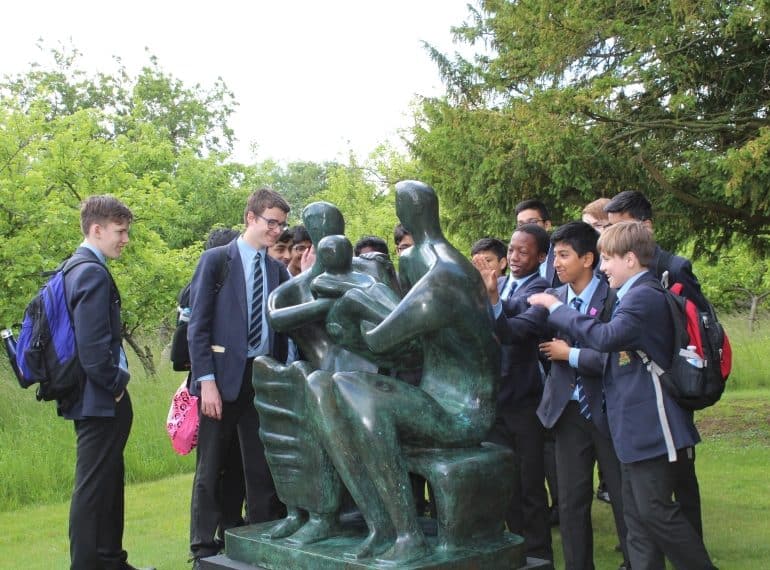
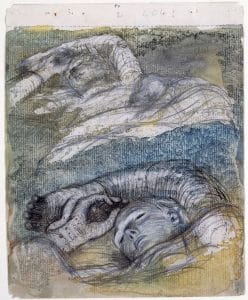 Not only did the Art trip give the pupils an opportunity to experience his spectacular outdoor sculptures in the beautiful grounds near Much Hadham, but they were also able to see the largest exhibition of his drawings in more than 40 years.
Not only did the Art trip give the pupils an opportunity to experience his spectacular outdoor sculptures in the beautiful grounds near Much Hadham, but they were also able to see the largest exhibition of his drawings in more than 40 years.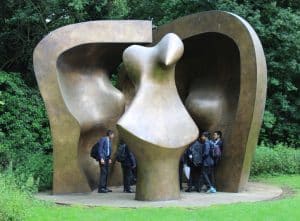 “The foundation displays a fantastic collection of his sculptural work. The students were taken on a tour of the grounds by informative guides who described the inspiration and construction behind these iconic pieces,” said Mrs McAteer.
“The foundation displays a fantastic collection of his sculptural work. The students were taken on a tour of the grounds by informative guides who described the inspiration and construction behind these iconic pieces,” said Mrs McAteer.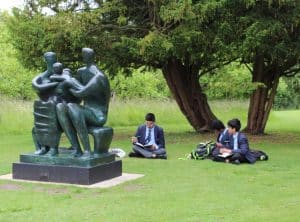 The trip began with a tour of Moore’s larger sculptures, before the group ventured inside his numerous workshops to look at his smaller, finer work. Here, said Sai, they picked up tips for improving their own sculpting, such as incorporating the appearance of bones and using textures inspired by nature, such as bark.
The trip began with a tour of Moore’s larger sculptures, before the group ventured inside his numerous workshops to look at his smaller, finer work. Here, said Sai, they picked up tips for improving their own sculpting, such as incorporating the appearance of bones and using textures inspired by nature, such as bark.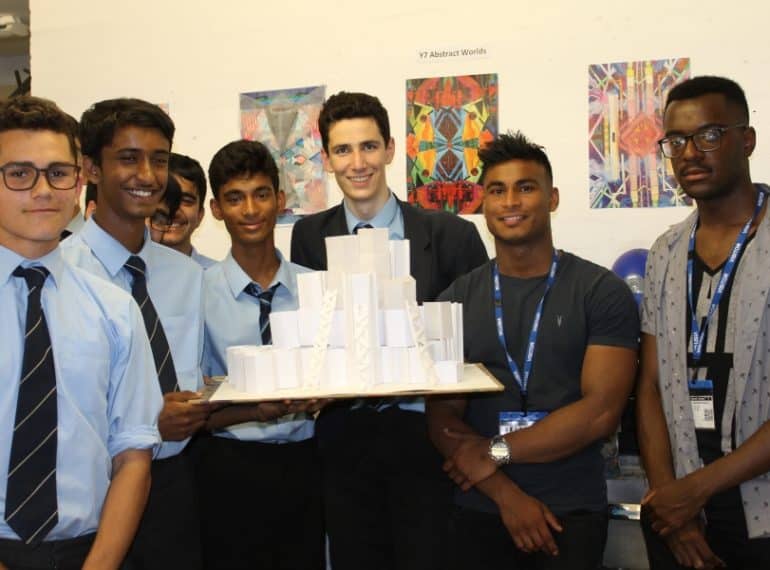
 Two of 2017’s Year 13 leavers, Nabil Haque and Tochi Onuora, who are both studying Architecture at Cambridge, came back to help.
Two of 2017’s Year 13 leavers, Nabil Haque and Tochi Onuora, who are both studying Architecture at Cambridge, came back to help.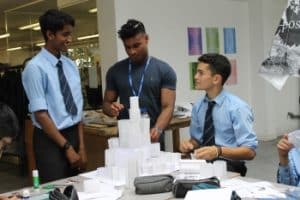 The pieces were judged at the end of the event. The Stapylton House team – comprising Alex Aliev, Nikhil Gulshan, Rakul Maheswaran, Jack Runchman, Aqif Choudhury, Riaz Kalim and Jude Miranda – won overall. Their contribution was praised for the way that it essentially used the same hexagonal shape repeatedly to build up the structure and create something very stable, yet still architecturally interesting.
The pieces were judged at the end of the event. The Stapylton House team – comprising Alex Aliev, Nikhil Gulshan, Rakul Maheswaran, Jack Runchman, Aqif Choudhury, Riaz Kalim and Jude Miranda – won overall. Their contribution was praised for the way that it essentially used the same hexagonal shape repeatedly to build up the structure and create something very stable, yet still architecturally interesting.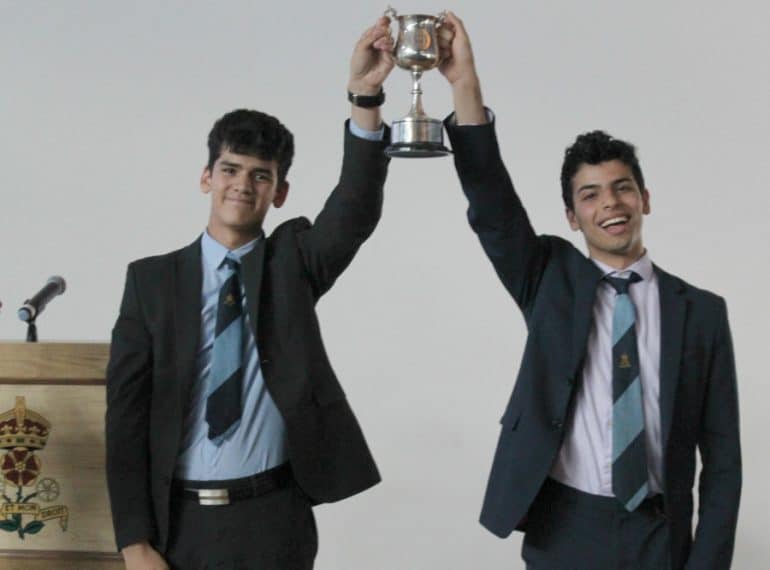
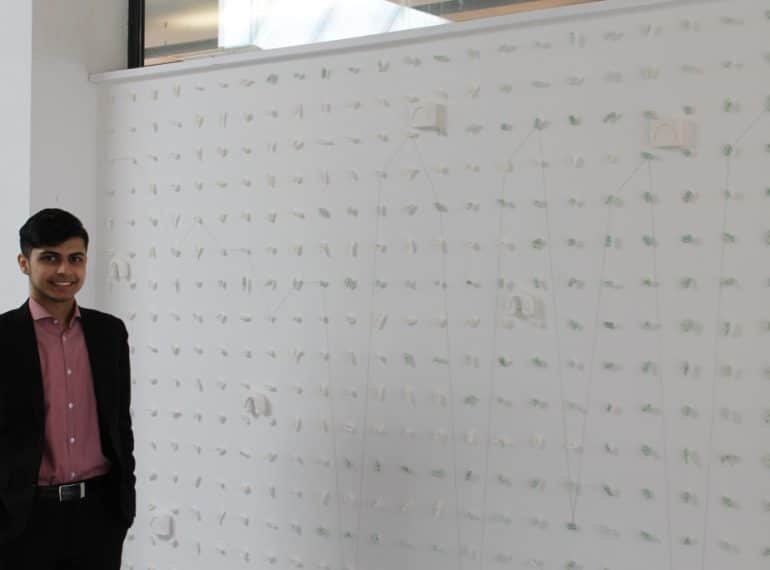
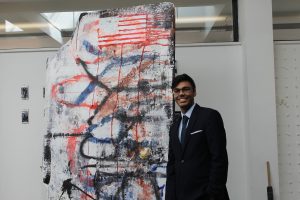 Darsh is going on to study Dentistry and his project explores the division between the personal and the clinical spheres. He employed a range of contrasting materials, including plaster of Paris casts, string, nails and even chewing gum.
Darsh is going on to study Dentistry and his project explores the division between the personal and the clinical spheres. He employed a range of contrasting materials, including plaster of Paris casts, string, nails and even chewing gum.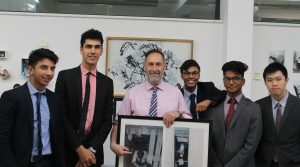 Head of Art Stephen Buckeridge said: “This year’s leavers were encouraged to find a subject that was deeply personal to them and that would sustain ideas and outcomes throughout the year. As starting a project is never easy, we encouraged the boys to record and explore ideas in the broadest sense – including note-making, research, photography, drawing and making. The breadth of investigation at the beginning was important; as the projects progressed, the ideas became more refined.”
Head of Art Stephen Buckeridge said: “This year’s leavers were encouraged to find a subject that was deeply personal to them and that would sustain ideas and outcomes throughout the year. As starting a project is never easy, we encouraged the boys to record and explore ideas in the broadest sense – including note-making, research, photography, drawing and making. The breadth of investigation at the beginning was important; as the projects progressed, the ideas became more refined.”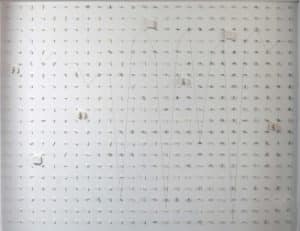 An expert panel of judges selected Darsh’s work as one of only 43 winning entries from more than 2,000 submissions by over 1,400 young artists.
An expert panel of judges selected Darsh’s work as one of only 43 winning entries from more than 2,000 submissions by over 1,400 young artists.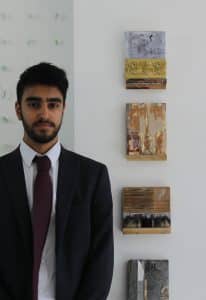 In his explanation posted as part of the online exhibition, Darsh explained the thinking behind both his artwork and its unusual title, Savium: “I became interested in examining the link between the clinical and the personal using an unconventional material. The intimacy yet inaccessibility of the word Savium also alludes to my ulterior (and superior) interest in the dichotomy between the clinical and the personal. I became intrigued in how the personal space of the body might be examined in a forensic manner. In the end this strange display successfully evoked the fundamental tension at the heart of dentistry; that of intimacy and distance, the personal and the sterile.”
In his explanation posted as part of the online exhibition, Darsh explained the thinking behind both his artwork and its unusual title, Savium: “I became interested in examining the link between the clinical and the personal using an unconventional material. The intimacy yet inaccessibility of the word Savium also alludes to my ulterior (and superior) interest in the dichotomy between the clinical and the personal. I became intrigued in how the personal space of the body might be examined in a forensic manner. In the end this strange display successfully evoked the fundamental tension at the heart of dentistry; that of intimacy and distance, the personal and the sterile.”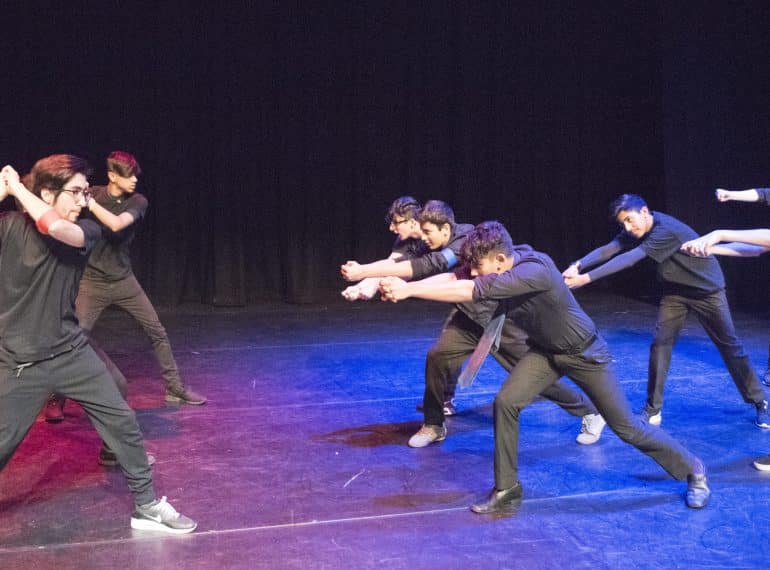
 “It can be difficult delivering Shakespearean language for the first time, but our boys learn quickly and always end that journey with a thorough understanding of their part,” said Mrs White. “Their storytelling became stronger and, by the big day the final piece was well-defined, with some solid performances.
“It can be difficult delivering Shakespearean language for the first time, but our boys learn quickly and always end that journey with a thorough understanding of their part,” said Mrs White. “Their storytelling became stronger and, by the big day the final piece was well-defined, with some solid performances. “The battle scene became one of their favourite scenes as it embodied powerful physicality and raw energy – quite daunting, especially when rehearsing in a small space!”
“The battle scene became one of their favourite scenes as it embodied powerful physicality and raw energy – quite daunting, especially when rehearsing in a small space!” Keenan Dieobi played the French king, while his fellow Year 13 pupils, Al-Fayad Qayyum and Mohit Miyanger, took the rôles of the Duke of Exeter and Fluellen respectively. Among the backstage support were 2016 leavers Miles Huglin, Shiras Patel and Alex Wingrave.
Keenan Dieobi played the French king, while his fellow Year 13 pupils, Al-Fayad Qayyum and Mohit Miyanger, took the rôles of the Duke of Exeter and Fluellen respectively. Among the backstage support were 2016 leavers Miles Huglin, Shiras Patel and Alex Wingrave.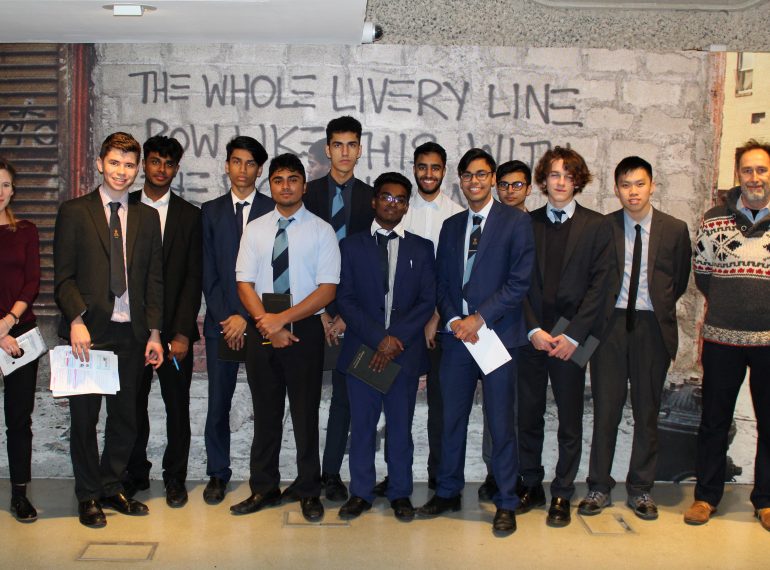
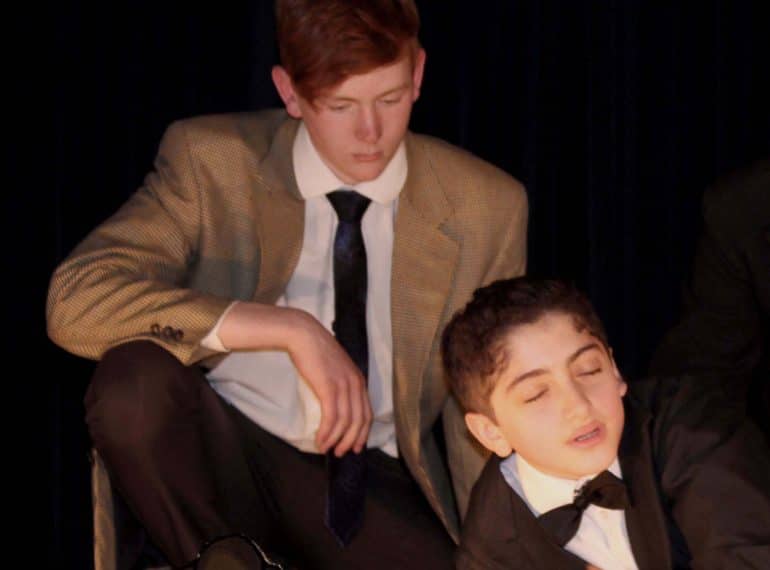
 Headmaster Neil Enright, who watched the play alongside Chairman of Governors Barrie Martin MBE, said: “Elaine has been pivotal in making Drama once again a central part of the extra-curricular offer at QE; I am most grateful for her dedication and commitment over the years. She has brought great joy to QE’s young actors and to audiences alike.”
Headmaster Neil Enright, who watched the play alongside Chairman of Governors Barrie Martin MBE, said: “Elaine has been pivotal in making Drama once again a central part of the extra-curricular offer at QE; I am most grateful for her dedication and commitment over the years. She has brought great joy to QE’s young actors and to audiences alike.” “The 39 Steps was a fitting swansong. The production was very entertaining – it has been many years since I have laughed so much! – and highly memorable, too. It was also well-attended over the two nights. And perhaps most importantly, the boys involved seemed to thoroughly enjoy performing.
“The 39 Steps was a fitting swansong. The production was very entertaining – it has been many years since I have laughed so much! – and highly memorable, too. It was also well-attended over the two nights. And perhaps most importantly, the boys involved seemed to thoroughly enjoy performing. The 39 Steps was among the first spy thrillers ever written. Its author, who was born in Scotland in 1875, had a remarkable life which included: helping in the re-structuring of South Africa following the Boer War; working as a literary adviser for a London publishing house, and serving in the First World War firstly in the Intelligence Corps and later in the Ministry of Information, while also working as a war correspondent for The Times. After the war, he became assistant director of the British news agency, Reuters, and was the Unionist Member of Parliament for the Scottish universities, 1927–35. In 1935 he was created Baron Tweedsmuir of Elsfield and also appointed Governor-General of Canada – a post he held until his death in 1940 from a cerebral thrombosis. Buchan wrote throughout his adult life.
The 39 Steps was among the first spy thrillers ever written. Its author, who was born in Scotland in 1875, had a remarkable life which included: helping in the re-structuring of South Africa following the Boer War; working as a literary adviser for a London publishing house, and serving in the First World War firstly in the Intelligence Corps and later in the Ministry of Information, while also working as a war correspondent for The Times. After the war, he became assistant director of the British news agency, Reuters, and was the Unionist Member of Parliament for the Scottish universities, 1927–35. In 1935 he was created Baron Tweedsmuir of Elsfield and also appointed Governor-General of Canada – a post he held until his death in 1940 from a cerebral thrombosis. Buchan wrote throughout his adult life.